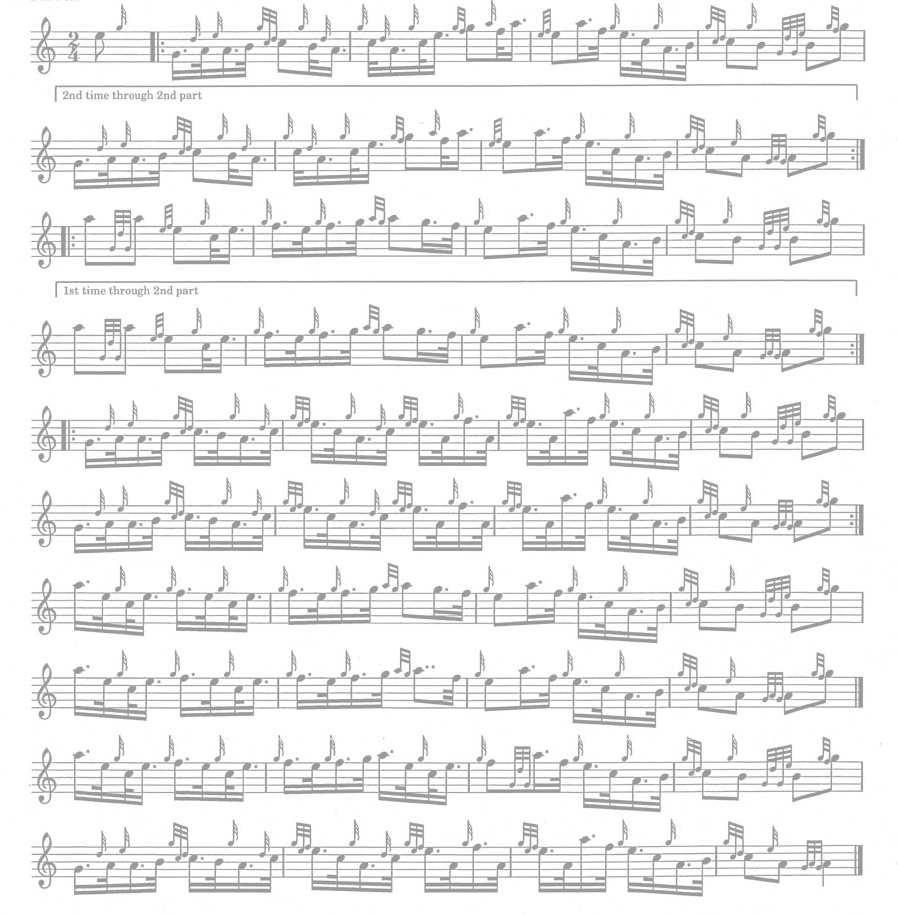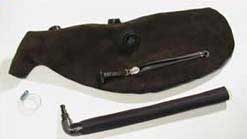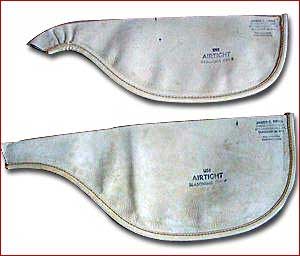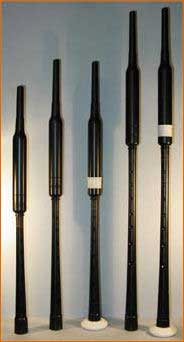

The Great Highland Bagpipe (GHB) or à phìob mhòr (Scottish Gaelic) is one of many types of Bagpipes in the World and while many think they are a Scottish instrument this is untrue as the first evidence of use in Scotland is some time around 1400 AD but artwork found in Spain shows them in the 13th Century. The Great Highland Bagpipe is made up of four main parts, comprising the "blowstick", the "bag", the "drones" and the "chanter" (melody stick).
The piper blows the bag up through the blowstick, most if not all blowsticks have some sort of non-return mechanism stopping the flow of air back up the blowstick and the Drones and the Chanter all have reeds restricting the flow of air. Enough practice and the piper knows when the bag contains suficient air that with one more good puff the piper can "strike" the pipes up and start playing.
The bag (air reservoir) can now be constructed of various materials, originally they were most likely a goat skin, dog skin, cow skin or a sheepskin but bags can also be made from synthetic materials such as gore-tex have been available for some time, gore-tex is a waterproof/breathable fabric, bags are available with zippers to open the bag for maintenance on parts for collecting the moisture asscociated with playing a Wind instrument.

gore-tex above is very light and flexible while the bannatyne below and two different size sheepskin bags shown are much stiffer and noticeable


Both the practice chanter and the GHB pipe chanter traditionally are made from african blackwood which grows in seasonally dry regions in africa, the colour goes from pure black to a reddish colour, african blackwood is also used in the manufacture of a variety of other musical instruments including Northumbrian pipes, Piccolos, Oboes and Clarinets. The timber of the african blackwood is very dense and has excellent moisture repellent qualities. the tree takes 60 years to mature. According to a catalogue by J & R Glen around 1920 "African Black wood has been proved conclusively to be the finest in every respect for Bagpipe making. It withstands every type of climate extreme" the timber is cut into small billets then stored and dried for a number of years prior to use in making musical instruments.


There are chanters for both practice and bagpipe made from various plastics available also today, which is more superior ? research shows there are different qualities available with both so it will come to an individual choice if the decision is the pipers or if a band player a band decision as they all should have the same chanter.

The low "a" of the chanter is an octave above the tenor drones and two octaves above the bass drone so it can be said that the bagpipe plays three octaves. there are eight notes in the chanter scale from low a to high a, when the bottom hole is closed an extra note is sounded, low g which is actually an extension of one note into a lower octave of the same scale. this note (low g)does not tune or harmonize with the drones and is the most dissonant (unstable, sounds harsh or unpleasant) note on the pipe scale. the bagpipe scale is mixolydian
the drones are also traditionally made from blackwood, there are two tenor drones and one bass drone (the big one)the tenor drone is b flat. in the drawing on the right the first part is the top of the bass drone it joins with the next part whic is tied into the bag, the following two are the two tenor drones, all three drones have the same stock (bottom piece) which can be tied in using string in the case of a sheepskin bag and fastened using a radiator type clamp to the newer types of bags. the drones can be tuned to the chanter by lengthening or shortening the length of the drone.